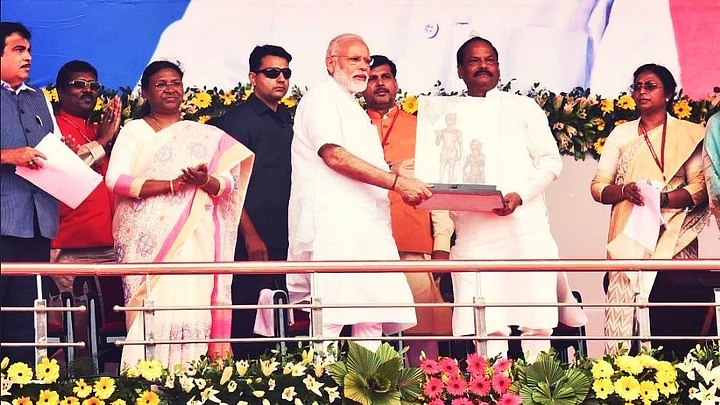I’ve been hearing of this one demand since I gained consciousness – that there should be a bridge over the Ganga in my native Sahibganj. This idea is 61 years old. Nobody has ever opposed the demand, but nobody has executed it either. Now, Prime Minister Narendra Modi has initiated the process of having it built.
On 6 April, the foundation stone to convert Sahibganj into a multi-model hub was laid. Sahibganj will bring Bihar, Jharkhand, West Bengal and the Northeast closer to each other. It will also make trade with neighbouring countries such as Bangladesh, Myanmar and China easier and cheaper. Consequently, it will be an oversimplification to view this project as a mere infrastructural facility. The strategically important project holds the key to removing the backwardness of the Northeastern region.
Window to Modernity
When I left Sahibganj years ago, the town’s population was about 75,000. Now, it’s risen to 11 lakh. My town isn’t as well known as Bareilly or Morvi, but it has deep historical roots. It was a big industrial centre even before British power was consolidated. After the Raj, it only grew bigger.
The fact that despite being backward, Sahibganj was quite cosmopolitan might come as a shock to many. Despite being part of the backward tribal region of Pargana, Sahibganj was the window to modernity.
The news of Modi’s visit to Sahibganj took my heart away from the world of Delhi, Mumbai and journalism, to my home town. Annual flooding of the Ganga was an accepted part of our life. The mention of my town is found even in the historical accounts of Megasthenes and Huen Tsang.
Santhal is a part of Pargana and the specialty of this place is that it harbours the Pahariya tribe which is even older than the Santhals. During the Mughal era and through the British Raj, the place was surrounded by the Rajmahal hills on three sides and the Ganga on the other. The sublime beauty of Sahibganj was snatched away first by Partition and subsequently when the Farakka barrage was built in 1975. Several commodity businesses, including jute, wound up.
My world as a teenager was overwhelmed by the political wave of the JP movement and the Emergency. Despite being under-developed and backward, the disposition of Sahibganj’s inhabitants was in favour of modernity. We Biharis are defamed for being casteists. Today, I deliver lectures on politics, society and economic issues.
But consider my innocence: I could never fathom the meaning or implication of caste till I graduated from Sahibganj College. I understood how integral caste as an issue is once I left Bihar to enter the world of journalism. That’s why I say that Sahibganj was the window to modernity. It was Vijay Tendulkar’s plays, and not ones like Sultana Daaku, that were performed in my college.
In the past few decades, the town’s population grew but not the town.
Sahibganj Will Become the Engine of Growth
The blueprint for a bridge over the river in Sahibganj found mention in the 1956 Visvesvaraya plan. It was a poll issue every year. Among the people who has stressed on the issue in the past few years is Godda Lok Sabha MP Nishikant Dubey.
Neither Jharkhand nor Bihar had the money. In 2010, it was given the status of a national project. Today, Modi and his Cabinet colleague, Roadways Minister Nitin Gadkari have even given the idea of creating a multi-model hub. If this project is completed in time, Sahibganj will become one of the biggest engines of growth. One can even imagine the untold possibilities considering that Baba Ramdev is also going to set up a factory here.
After my father passed away, when the family’s survival became a struggle, we fell back on the Ganga. Just as the annual Ganga floods swept away several boats, the family income also took a hit. Once my elder brother stepped out, I followed suit in search of a livelihood.
Modi has turned Sahibganj’s fate after years. This will pave the way for an increase in land prices, which implies that the value of my house too will go up. If the Ganga took anything away from us, it seems like she is returning all of it now, with interest.
(At The Quint, we question everything. Play an active role in shaping our journalism by becoming a member today.)
